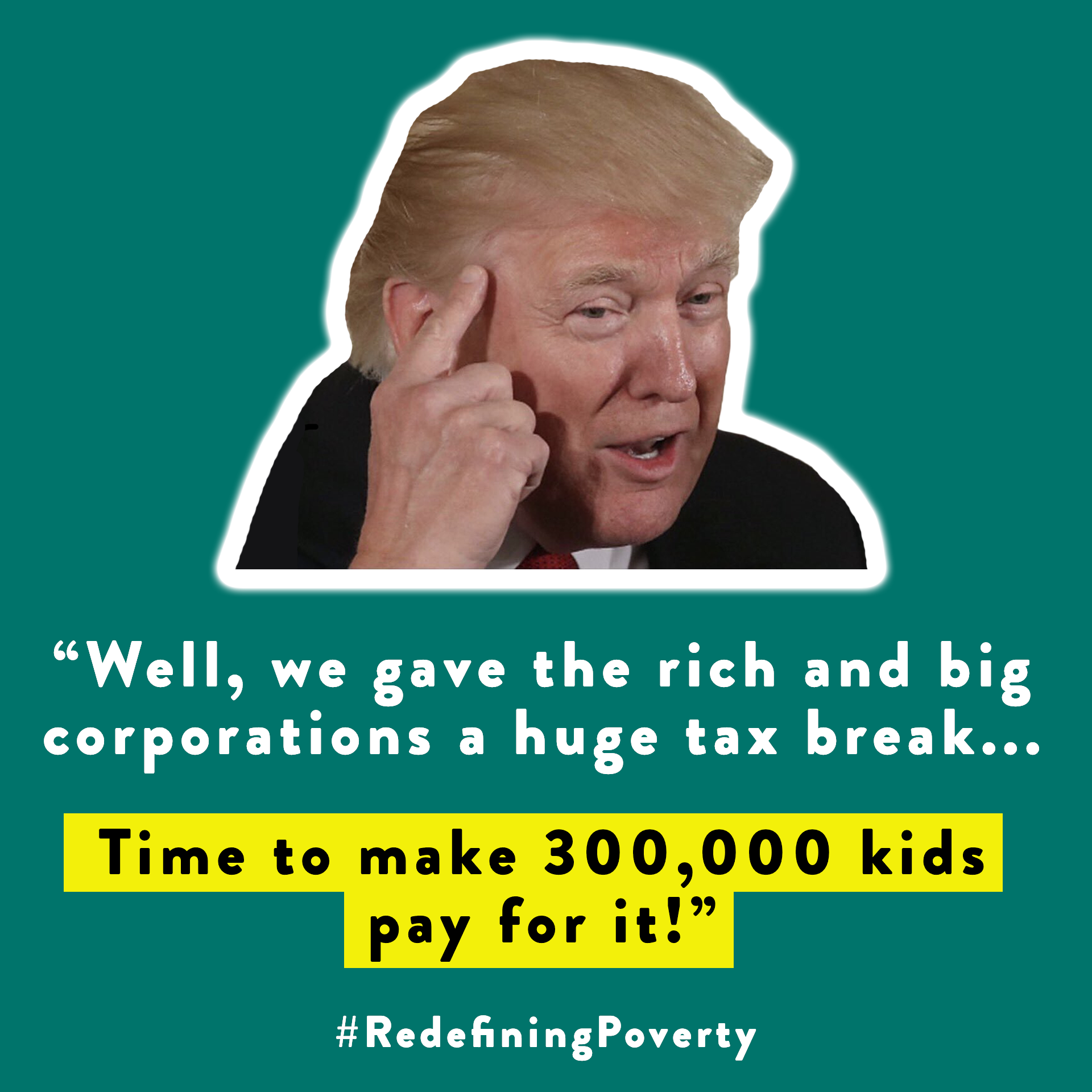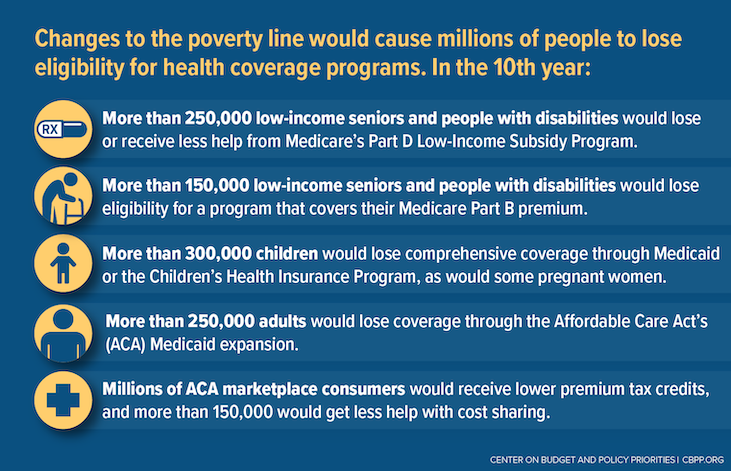
More than 52,000 comments submitted opposing the latest attempt to shrink the poverty line
 In May, the Trump Administration announced its latest plan to deny assistance to millions: shrinking the poverty line. Right now, the poverty line is adjusted each year for inflation using an index called the Consumer Price Index for all Urban Consumers (CPI-U). The administration stated it is exploring different options – such as a so-called chained consumer price index. This is a different inflationary index that would grow more slowly than the one that’s used right now; hence, the poverty line would grow more slowly over the years, and in about a decade, millions would be defined out of poverty or near-poverty, despite no substantial change to their financial situation.
In May, the Trump Administration announced its latest plan to deny assistance to millions: shrinking the poverty line. Right now, the poverty line is adjusted each year for inflation using an index called the Consumer Price Index for all Urban Consumers (CPI-U). The administration stated it is exploring different options – such as a so-called chained consumer price index. This is a different inflationary index that would grow more slowly than the one that’s used right now; hence, the poverty line would grow more slowly over the years, and in about a decade, millions would be defined out of poverty or near-poverty, despite no substantial change to their financial situation.
The Trump Administration claims they want to make this change for the sake of accuracy. But that is simply not true. The definition of poverty is arbitrary; right now, it’s based on an outdated metric that calculated a minimal cost of living for a family of four in the 1960s. It is true that we should measure poverty more accurately. But shrinking the inflation adjustment does not do that: in fact, there is evidence that the inflation measure OMB seeks to use does not take into account actual spending patterns for low-income people.
Put simply, the Trump proposal to shrink the poverty line is a thinly-veiled attempt to both arbitrarily define people out of poverty, so that poverty seems like less of a problem; and to cut or deny assistance to millions of people, whether that assistance is SNAP, reduced-cost or free school meals, energy and housing programs such as LIHEAP and weatherization, or health insurance benefits such as Medicaid and prescription drug subsidies.
Along with their announcement, the Trump Administration’s Office of Management and Budget (OMB) called for public comments on this proposed adjustment in the poverty measure. That’s why CHN took action, mobilizing tens of thousands of people to submit comments against this change.
Trump’s OMB explicitly requested feedback not be given on this change’s potential impact on benefits for the poor and near-poor, but to focus on the implications of the change in the poverty measure itself. So CHN drafted sample comments with two goals in mind. First, we wanted to explicitly address OMB’s concerns. But second, we simultaneously wanted to point out that millions of people could lose some or all of their benefits to show exactly why this proposal is so irresponsible.
Through our webinars, email blasts, direct outreach, and the support of our coalition members and other like-minded groups, CHN helped generate more than 52,000 comments opposing this attempt to redefine the poverty line, submitted from all 50 states and the District of Columbia.
Some commenters shared their personal stories, such as the stories of those living in or near poverty who depend on SNAP and other programs to get by. One commenter living with HIV recounted having to go back to work recently, and how lowering the poverty line would threaten health insurance for people like her. An elderly woman who makes $17,000 a year stressed the importance of SNAP benefits to help her survive. Some commenters were forced into poverty after taking in kids of deceased relatives. Some struggle to get by, but live just above eligibility for most assistance programs—further proof that the poverty line must be higher, not lower.

On the other hand, more than 100 organizations submitted comments as experts in their fields, including organizations advocating for domestic violence survivors, on behalf of kids and families who depend on SNAP and other forms of food assistance, , community action agencies, and more. These organizational voices lent their credibility and expertise as professionals on the frontline of the war against poverty. Those commenting took advantage of CHN’s sample language and other resources, which included detailed information on how shrinking the poverty line would negatively impact Medicaid and CHIP; prescription drug subsidies; the Affordable Care Act; SNAP and school meals; LIHEAP and weatherization programs; WIOA Youth Training; and Head Start.
The comment period on this directive ended on June 21. So, what’s next? OMB has told us they won’t publish the comments they’ve received until they put out their final decision on this proposal. Because OMB is not seeking to change federal regulations and does not have to consider public comments as they would under official federal rule-making, we don’t know how long they will take to make a final decision or how much they will take the comments into account.
So now we have to make sure Congress is aware of the public response to this measure. We urge you to click here and send a letter to your members of Congress—even if you didn’t originally send in a comment yourself. Let them know that you care about the millions of people who would be negatively affected by decreasing the poverty line, and that you expect them to take action to oppose this change. This simple step will ensure members of Congress know they need to do all they can to reject this attempt to change the poverty measure.

